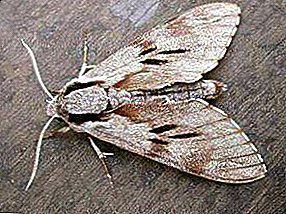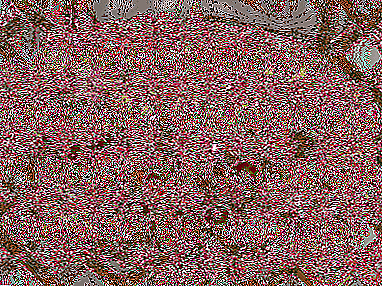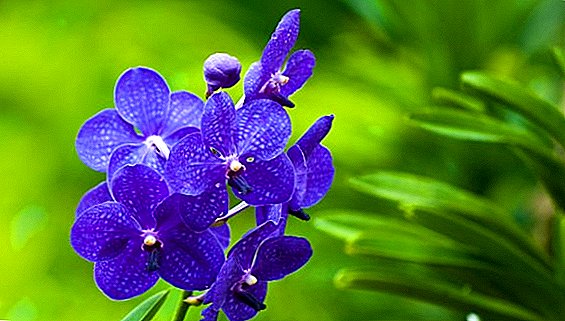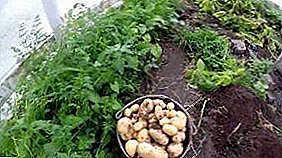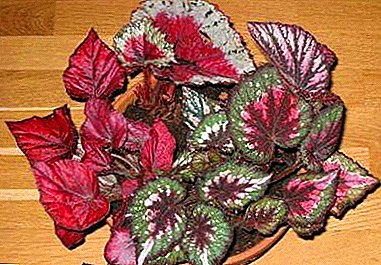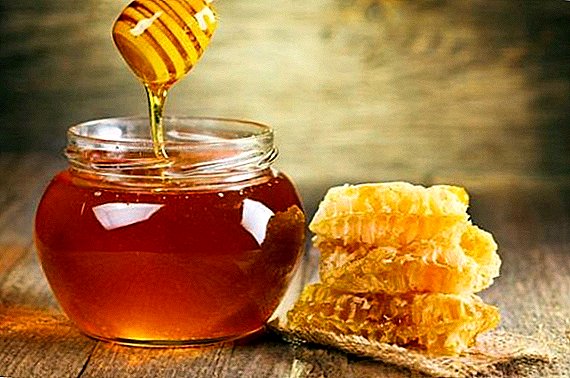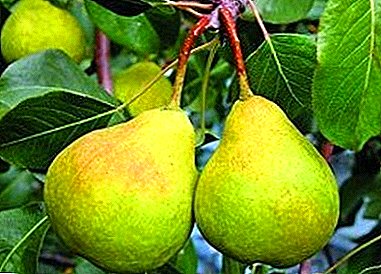
For several decades at the plant breeding stations, painstaking work was done to create new, frost-resistant varieties of fruit trees.
If apple trees have long taken root in Siberia and the Urals, the pears demanded hard work, as a result of which they were bred winter hardy varieties first selections.
They not only became the basis of new improved varieties, but also remained loved by gardeners. These varieties include pear Northerner - A description of the variety, photos of the fruit and reviews of gardeners later in the article.
What kind of pears refers?
This is one of early summer varieties.
Northerner very early on fruiting. Harvest is already available 2-4 year.
Summer pear varieties also include: Duchess, Tonkovetka, Chizhovskaya, Skorospelka from Michurinsk and Severyanka Red-cheeked.
Breeding history and breeding region
 In 1959, the Institute named Michurin brought Svetlyanka variety, the distribution of which began immediately after the control tests.
In 1959, the Institute named Michurin brought Svetlyanka variety, the distribution of which began immediately after the control tests.
Very good restoration of the variety after the cold Siberian winter was its main advantage. But work continued, and eventually got Severyanka, improved version of Svetlyanka.
Grade received PN Yakovlev when crossing two: Clapp's pet and Koparechka number 12. The work was carried out at the station selection in Chelyabinsk. Originally derived variety was called "Seedling Yakovlev number 103" in honor of its creator.
Then this variety began to be called pear Severyanka Yakovlev, because it was designed for areas of the North, and later began to be called simply Severyanka. Although these varieties of pears still remain popular in the Urals, but their new industrial landings are no longer found.
At this time, Severyanka is almost not used at all in production. The value of this variety has plummeted due to the emergence of new, more productive varieties.
Therefore, he, like his predecessors, is found only in private gardens in Siberia. Especially love pear varieties Northerner at gardeners Bashkiria, Kurgan and Chelyabinsk regions for high winter hardiness, further description of all characteristics of the variety and photo of the fruit.
For planting in the Siberian regions of the Russian Federation suitable varieties Svarog, Tyoma, Krasnobakaya, Krasulya and Lada.
Description of the variety Severyanka
Consider separately the appearance of the tree and fruit.
Tree
 Plant low, with a wide pyramidal crown of medium thickness, there are also practically round forms. Growing fast. Color leaves have a dark green.
Plant low, with a wide pyramidal crown of medium thickness, there are also practically round forms. Growing fast. Color leaves have a dark green.
They have a slightly pointed tip, they resemble an inverted egg.
The stalks are also green in color and short in length. Stipules have the shape of a saber.
In the inflorescence is up to 6 flowers. Petals are even, white, the flower has the form of a small saucer.
Fetus
Fruits ripen medium sizes from 80 to 100 grams. They grow not one-dimensional, truncated-conical shape. During the harvest period there are greenish-yellowthen they gradually become juicy yellow, a little with green. The skin is not rough, but rather dense.
The flesh is also quite dense, juicy cream, slightly aromatic, sweet, with a slight sour taste, impatient.
There are few seeds, they are brown, large, arranged in small seed chambers.
A photo





Specifications
With careful care and proper watering pear yield is about 45-60 kg. Under favorable weather conditions in the summer from one tree you can collect and up to 100 kg.
Northerner is high-yielding variety. The first sign of full ripeness is the appearance of a smooth yellow color in the skin, but the seeds remain white. Fruits are not one-dimensional in size.
 Start harvesting pears accounted for on the tenth of August and lasts almost until the end of the month. By the end of this period, the fruit pulp becomes brown.
Start harvesting pears accounted for on the tenth of August and lasts almost until the end of the month. By the end of this period, the fruit pulp becomes brown.
Fruits that have reached full ripeness, completely showered from the tree within 2-3 days. Fruits are stored approximately 10 days in a cool room in wooden or wicker containers.
Experts recommend to conduct Collect earlier for 5-7 days, to prevent fruit falling. And besides, the fruits collected in advance are stored in a cold cellar or a refrigerator up to two months.
When self-pollinating this variety, only up to 30% of fruits are tied. Therefore, this variety needs pollinator.
Northerner useful to plant in the vicinity of the grade In memory of Yakovlevwhich is the best version of its pollinator.
This variety has high winter hardiness and medium drought tolerance. There have been cases in Ufa, when during short frosts in Only young trees have completely frozen out 50 degrees.
And with a prolonged decrease in temperature to -42 degrees, the above-ground part died, but the trees quickly recovered. With a lack of moisture fruits shrink, the taste gets worse, the harvest shifts by one to two weeks.
The winter-hardy pear varieties also include: Yakovlevskaya, Chudesnitsa, Fairy, Tikhiy Don and Tatiana.
Planting and care
 For planting this plant is to choose sunny, sheltered from the wind. It is recommended to prepare the landing pit in advance, two to three weeks before the purchase of seedlings.
For planting this plant is to choose sunny, sheltered from the wind. It is recommended to prepare the landing pit in advance, two to three weeks before the purchase of seedlings.
To lay at the bottom of the pit manure and humus. Its value will be 60 cm deep and about 90-100 cm wide.
The first pruning of the pear is done after planting. If the seedling has no skeletal branches at all, the plant has one shoot, preferably cut at a height of 70-90 cm above the ground and keep at least three developed buds.
This type of pruning is done every spring for several years after planting a tree.
Pears love moisture, and therefore watering is done several times in spring and summer.
Fertilize in the second year of the tree life. For the winter you need be sure to warm the young trees due to the fact that they can suffer from the cold.
Watch a video workshop on pruning pears:
Diseases and pests
Sort moth and pear gall resistant. If suddenly there was a freezing of the leaves in the spring, then there may be complications due to a bacterial burn.
Rarely, but there are such diseases as, for example:
- Mycoplasma Disease, or "Witch Broom";
- //selo.guru/ptitsa/bolezni-p/gribkovye/parsha.html;
- Fruit rot.
 Sometimes pests attack a tree:
Sometimes pests attack a tree:
- butterfly hawthorn;
- pear leaf gall midge whose larvae live and feed on leaf tissues and other parts of the plant.
Resistance to diseases is demonstrated by the following pear varieties: Elena, Pamyati Yakovleva, Dessert Rossoshanskaya, Autumn Yakovleva and Marble.
If you plant a variety of Severyanka in your garden, you can enjoy delicious fruits every year. This variety is great for breeding new ones. Pears are considered a durable plant with wonderful fruits.


